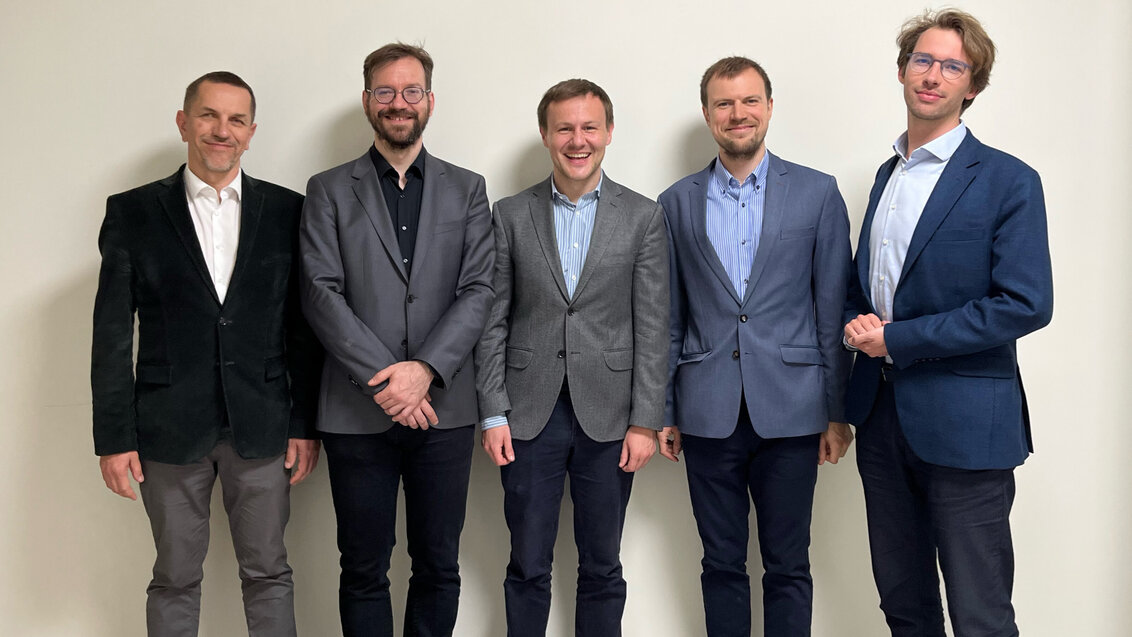For small projects to have a chance at being carried out from civic funds, their budget does not need to increase. It is enough to change the method of selecting the winners.
Decisions to spend a few hundred thousand zlotys can be taken hastily although they should not. All the more so if it is civic budget spending that is intended to best serve the entire community. Researchers from several academic centres around the world, including the AGH University, have developed a vote-counting system that maximises the impact of each individual vote on the final outcome. The Method of Equal Shares was recently used during the participatory budget vote in Wieliczka. The researchers' analysis of the results shows that all the assumptions worked in practice and that more voters are satisfied with the Method of Equal Shares than with the previous vote-counting methods.
“Cities generally use a greedy method, which is the majority method, i.e. if someone collects a lot of votes they will get their project, which means, by definition as it were, that small projects, created by small groups of local people, stand no chance. The Method of Equal Shares is a proportional method, which means that a project's chances actually depend not just on how many people vote for it, but rather on how many people vote for it relative to its cost. So if someone in a small housing estate comes up with a small, cheap project and convinces their neighbours of it, they have a chance in the Method of Equal Shares,” claims Prof. Dr hab. Piotr Faliszewski, an employee of the Faculty of Computer Science, Electronics, and Telecommunications who cooperates with its originators, emphasising the advantages of the method developed. “In fact, all data analysis confirms that the Method of Equal Shares guarantees that there are far, far fewer people who casted their votes in the civic budget and none of their projects were funded. With this method, there are significantly less excluded people who took part and may be disappointed or not motivated to vote the following year.”
The winner does not take it all
Under the simplest and most commonly used voting formula, the greedy majority system, those projects that win the most votes and have the budget to cover their cost are implemented. These are basically the only two conditions that make it possible for funds to be distributed by one, not necessarily large, group of people. If the most popular project was very expensive, there may not be enough funds to implement the others, in which case a significant proportion of voters are left without any influence on the outcome of the election. If they do not vote in line with the majority, their votes are simply not reflected in the final outcome.
The Method of Equal Shares works differently. First of all, it allows everyone to influence the final outcome equally – it starts by dividing the available funds equally among all voters. Of course, the division is purely symbolic – no voter gets any money, but we can think of it in the way that casting a vote is a declaration to allocate part of the divided money to a particular project. Unlike the traditional greedy method, the most popular project does not win everything – only the amount available to those who voted for it can be used to fund it. Leaving aside the actual amounts of participatory budgets, let us assume that it is PLN 100, and among the projects the most popular was the renovation of a swing on the playground amounting to PLN 100, and only nine out of ten voters voted for it, the project will not be able to be implemented as those supporting this project have only PLN 90 at their disposal (everyone is entitled to PLN 10, as the whole budget [100] was divided equally among the voters). It is therefore necessary to find a project that is supported by enough voters to cover its cost, e.g. planting a tree by the playground at a cost of PLN 50, for which seven people voted.
Later, we consider more projects – is their cost proportional to the number of people who voted for it? And do they still have the finances to cover this cost? After all, we have to take into account that the people who have already cast their vote for the most popular of the possible projects (planting a tree) have already spent some of their money. If 7 people are willing to "chip in" for a tree for 50 zlotys, each has spent just over 7 zlotys. So they still have 2.85 zlotys to spare each, and only to this extent can they participate in further collections. Their vote also counts proportionally, which only confirms that all votes are equal. With further approved projects, on which some or all of the voters have already spent their money, deciding on the viability of further projects becomes somewhat more complicated. The overriding principle for the next steps, however, is that each voter should spend the smallest possible amount on a project in order to optimise the equality of the distribution of costs between all those voting for that project.
“Let's say that there is a project which is approved by many people,” explains Prof. Piotr Faliszewski, “and it turns out that if we divide it among these people, everyone has to give virtual two hundred zlotys. But some still have four hundred zlotys on their account, and some only one hundred. It may turn out that those who have four hundred zlotys, however, will have to pay not two hundred, but three hundred, and those who have only one hundred will pay one hundred, because they have no more. Then, the Method of Equal Shares works in such a way that those who pay three hundred count as the whole vote, but those who pay one hundred will be counted as one third of the vote. So that is how we will calculate the support for that project, and it might then turn out that somewhere next door there is a project where the drop was 250 zlotys, but exactly all those people who would have paid that 250 have that much. And it may be that their weighted power is greater and it is their project that will be included in the round of the Method of Equal Share. So the method takes into account the fact that at different stages voters will be able to pay, virtually of course, different amounts.”
In the photo, the creators of the Method, from left: Dr Jarosław Flis, Prof. UJ; Prof. Piotr Faliszewski; Dr Piotr Skowron; Grzegorz Pierczyński; Stanisław Szufa. Photo from the AGH University archives.


 Pre-election meeting with a candidate for the position of rector
Pre-election meeting with a candidate for the position of rector  Agreement on cooperation with OPAL-RT
Agreement on cooperation with OPAL-RT  Krakow DIANA Accelerator consortium members with an agreement
Krakow DIANA Accelerator consortium members with an agreement  Meeting with the Consul General of Germany
Meeting with the Consul General of Germany  More Academic Sports Championships finals with medals for our students
More Academic Sports Championships finals with medals for our students  Launch of AGH University Student Construction Centre
Launch of AGH University Student Construction Centre  Bronze for our swimmers at Academic Championships
Bronze for our swimmers at Academic Championships  Smart mountains. AGH University scholar develops an intelligent mountain rescue aid system
Smart mountains. AGH University scholar develops an intelligent mountain rescue aid system